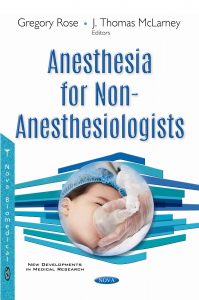Anesthesia for Non-anesthesiologists

Anesthesiology is one of the least understood medical specialties. The drugs and equipment are specialized to a point where physicians in other fields have little knowledge of how they work. Moreover, the specific techniques and concerns of anesthesiologists regarding patient care are scarcely known outside of the specialty. Most physicians have had a paltry amount of training in anesthesia, if any at all. Within many medical schools, there is no requirement to rotate in anesthesiology; if required, the rotation is seen sometimes as a means to practice intubations and place IVs for a period of two to four weeks, instead of actually learning anesthesia techniques and practices. As their role in patient care has stretched outside of the operating room, anesthesiologists have found that there is often frustration and even conflict in dealing with other specialties that do not understand the concerns and necessities that accompany this practice. Why is NPO important? Why does the patient need to see a cardiologist pre-operatively? Why would the patient benefit from using Drug A vs Drug B? These questions come up not only in the operating room, but on the obstetrical floor, in the endoscopy suite, in the critical care units and elsewhere. It is the authors’ hope that this book, Anesthesia for Non-Anesthesiologists, will help to decrease such problems. With chapters written by a variety of anesthesiologists and subspecialty clinicians at a major teaching hospital, and edited by experienced academic physicians, the target audience for this work includes physicians, medical residents, and students who wish to understand how anesthesiologists think and why they think as they do.
[amazon template=iframe image&asin=1536110981]
–
ALTERNATIVE LINK